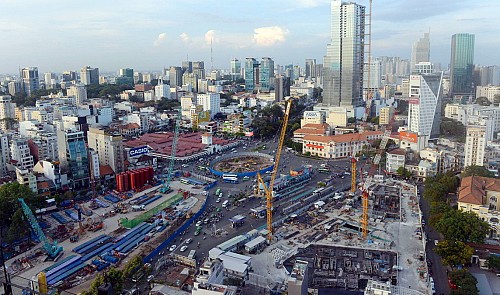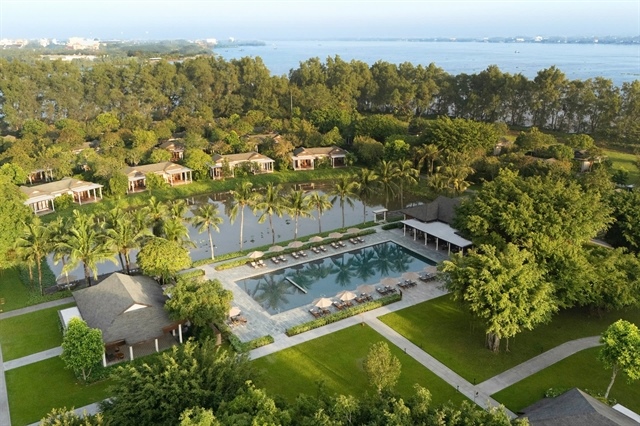Ho Chi Minh City estate game is going underground
Ho Chi Minh City estate game is going underground
As Ho Chi Minh City braces for the opening of its first metro line, which will travel underground in downtown areas, the race to deliver real estate opportunities is heating up.

Multiple developers of high-rise apartments, shopping malls and condominiums in the southern hub have sent a joint letter to the municipal Management Authority for Urban Railways (MAUR), requesting permission to connect their buildings to the city’s future underground metro network.
The request was viewed favorably by the MAUR, which said good connections between the metro network and nearby building infrastructure was the key to encouraging the use of public transport among residents.
There is already a project on District 1’s Nguyen Hue Street that includes six basement floors that will connect to the metro station located under the Municipal Theater once the station is completed, according to the city’s Department of Planning and Architecture.
The first metro line in Ho Chi Minh City, which runs nearly 20 kilometers between Ben Thanh Terminal in District 1 and Suoi Tien Amusement Park in District 9, includes a 2.6-kilometer underground section from Ben Thanh to Ba Son Terminal in District 1.
The metro project is the first to be included in the planning of underground space currently being drafted by city authorities.
In fact, Ho Chi Minh City will be the first Vietnamese city or province to have a comprehensive plan for its underground space, a vision it had long held but was never taken seriously until now.
“The planning of underground space serves to improve the city’s appeal and combat worsening congestion on the ground,” said Nguyen Dinh Hung, deputy director of the municipal Department of Planning and Architecture. “The need for connection between underground spaces is becoming increasingly urgent, now that the city will have public underground spaces as part of its future metro network.”
Hung’s department has been tasked with drafting the underground planning, which is expected to be officially unveiled by the end of his tenure.
Until now, the city has had no over-arching plan based on what construction permits for underground projects had been granted, Hung said, and because the underground space of each building had been approved only in the context of its own use, rather than taking into consideration its place in the city’s overall underground network.
“For the moment, we will be introducing the underground plan for 930 hectares of the city’s downtown area,” Hung said. “The neighboring areas will be planned at a later stage once we better understand the needs of both realtors and users.”
According to Hung, the connection between private and public underground spaces benefits both parties, and the local administration is as eager as the realty developers are to welcome the introduction of such planning.





















